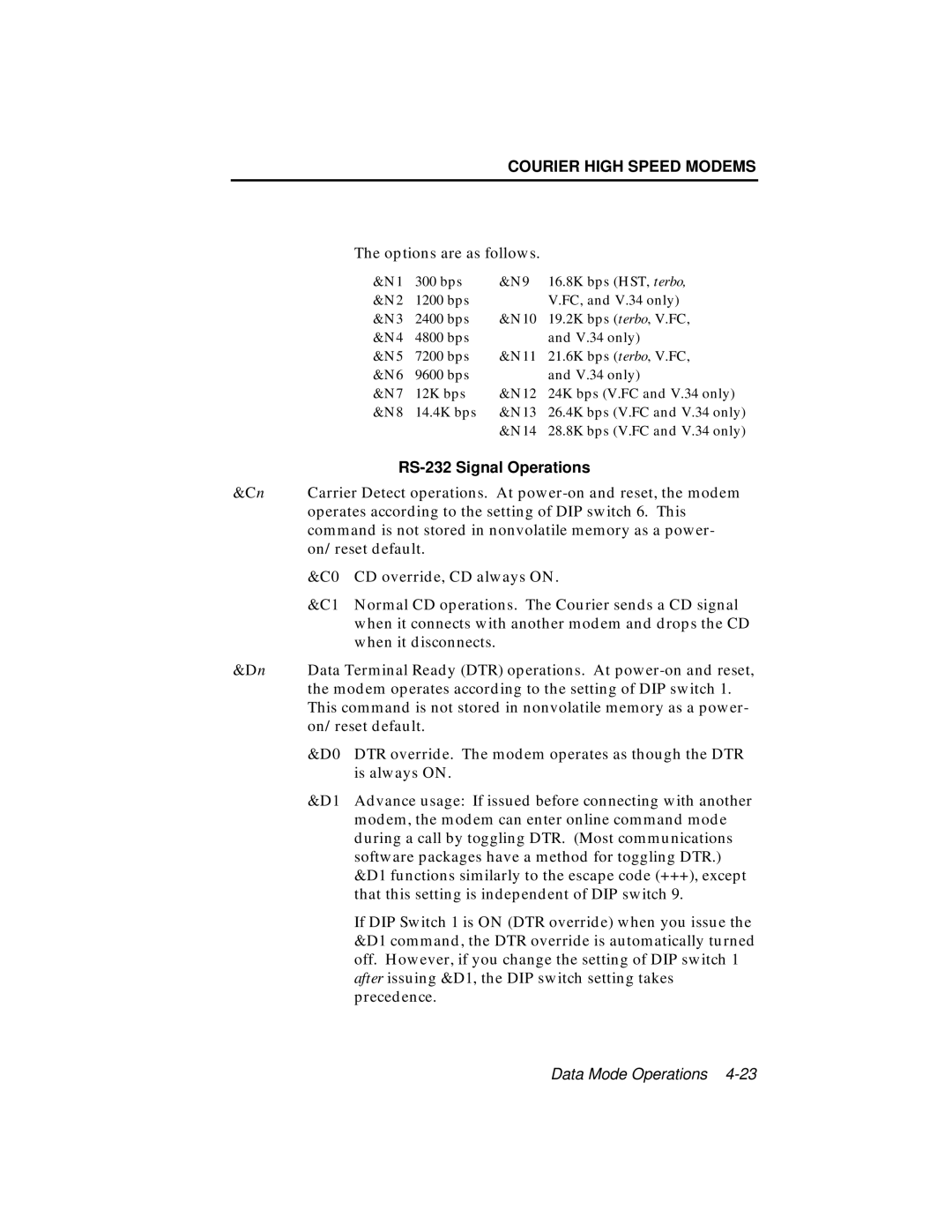COURIER HIGH SPEED MODEMS
The options are as follows.
&N1 | 300 bps | &N9 | 16.8K bps (HST, terbo, |
&N2 | 1200 bps |
| V.FC, and V.34 only) |
&N3 | 2400 bps | &N10 | 19.2K bps (terbo, V.FC, |
&N4 | 4800 bps |
| and V.34 only) |
&N5 | 7200 bps | &N11 | 21.6K bps (terbo, V.FC, |
&N6 | 9600 bps |
| and V.34 only) |
&N7 | 12K bps | &N12 | 24K bps (V.FC and V.34 only) |
&N8 | 14.4K bps | &N13 | 26.4K bps (V.FC and V.34 only) |
|
| &N14 | 28.8K bps (V.FC and V.34 only) |
RS-232 Signal Operations
&Cn Carrier Detect operations. At
&C0 | CD override, CD always ON. |
&C1 | Normal CD operations. The Courier sends a CD signal |
| when it connects with another modem and drops the CD |
| when it disconnects. |
&Dn Data Terminal Ready (DTR) operations. At
&D0 | DTR override. The modem operates as though the DTR |
| is always ON. |
&D1 | Advance usage: If issued before connecting with another |
| modem, the modem can enter online command mode |
| during a call by toggling DTR. (Most communications |
| software packages have a method for toggling DTR.) |
| &D1 functions similarly to the escape code (+++), except |
| that this setting is independent of DIP switch 9. |
| If DIP Switch 1 is ON (DTR override) when you issue the |
| &D1 command, the DTR override is automatically turned |
| off. However, if you change the setting of DIP switch 1 |
| after issuing &D1, the DIP switch setting takes |
| precedence. |
Data Mode Operations
